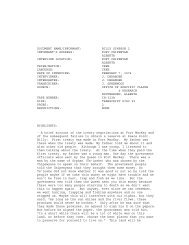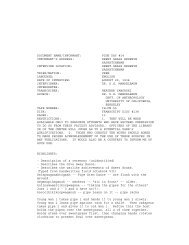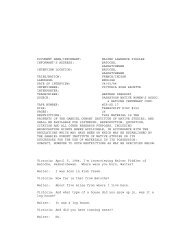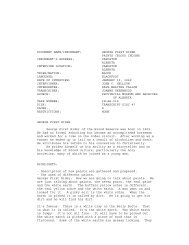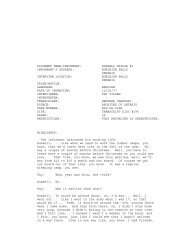Contents of It's not All in Your Head by Asmundson and Taylor
Contents of It's not All in Your Head by Asmundson and Taylor
Contents of It's not All in Your Head by Asmundson and Taylor
Create successful ePaper yourself
Turn your PDF publications into a flip-book with our unique Google optimized e-Paper software.
literature; therefore, we had reason to believe they received helpful treatment for their<br />
symptoms. The purpose <strong>of</strong> this particular experiment was to compare a self-help<br />
treatment for health anxiety <strong>and</strong> a wait-list control condition. The SHB treatment was<br />
expected to be helpful. WLC participants were <strong>in</strong>formed that they were placed on a wait-<br />
list group <strong>in</strong> order to compare the treatment with a no-treatment control condition. They<br />
were given the option to beg<strong>in</strong> the SHB treatment as soon as possible. <strong>All</strong> participants<br />
were given the opportunity to discuss the treatment, ask questions, <strong>and</strong> request<br />
<strong>in</strong>formation about the results <strong>of</strong> the study once it is completed.<br />
2.4.6. Data analysis<br />
Research data was downloaded from SurveyMonkey.com <strong>and</strong> AmIHealthy.com<br />
<strong>and</strong> then entered <strong>in</strong>to SPSS Release 16.0. ITT analysis was carried out for all participants<br />
who were r<strong>and</strong>omly assigned <strong>and</strong> rema<strong>in</strong>ed <strong>in</strong> the study until T2. This <strong>in</strong>cluded data from<br />
4 participants who dropped out <strong>of</strong> the SHB group. Their data was <strong>in</strong>cluded <strong>by</strong> employ<strong>in</strong>g<br />
the last observation carried forward procedure (LOCF) where<strong>by</strong> the T2 scores <strong>of</strong> those<br />
participants were substituted for their T3 scores (Hollis & Campbell, 1999). This<br />
precluded any comparisons between T2 <strong>and</strong> T3 scores. Chi-square (χ 2 ) analyses were<br />
conducted to identify group differences based on demographics. The sample size for the<br />
study was small; therefore, t tests were used to analyze the data. Paired samples t tests<br />
were used to identify significant changes <strong>in</strong> participant scores pre- <strong>and</strong> post-treatment.<br />
48



